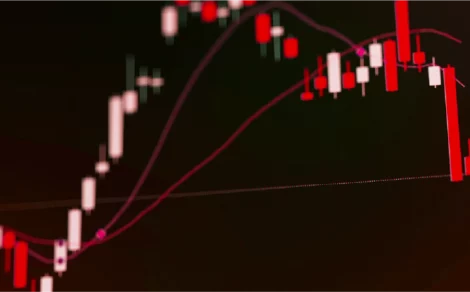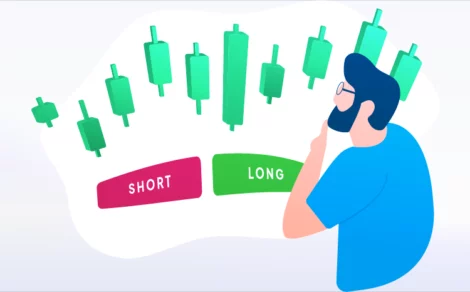Many patterns are powerful, but the Marubozu pattern is among the strongest. It clearly shows control by buyers or sellers, making it a useful tool for spotting trend directions.
Toruscope » Online Trading » Marubozu Candlestick Pattern
Candlestick charts are among the most popular tools used in technical analysis. They show market movements and investor sentiment through simple visual representations. One of the most powerful and easy-to-identify patterns is the Marubozu candlestick pattern. It offers clear signals for potential trend continuation or reversal, especially when used alongside other indicators.
In this article, we’ll explore what is Marubozu candlestick pattern, its types, key features, how to identify it, and how traders can use it to make more informed decisions.
What Is Marubozu Candlestick?
If you’re wondering “What is a Marubozu in candlestick patterns?”—the term “Marubozu” originates from Japanese, meaning “bald” or “shaven head. In candlestick charts, it refers to a candle that has hardly any shadows or has very small wicks. Marubozu candles usually have only a long rectangular body, indicating strong buying or selling pressure during a single trading session.
Marubozu is a single candlestick with a full body where the opening price and closing price are either at the high or the low of the session. This indicates complete dominance of either buyers or sellers during that particular session. This candlestick pattern is often seen as a strong indicator of market momentum.
What Are the Features of Marubozu Candlestick Pattern?
Marubozu candlestick is simple in structure yet powerful in what it reveals. Here’s a closer look at the key features that define a Marubozu candlestick pattern:
- No Shadows/Wicks: The candle does not have lines above or below the body. This shows complete control by buyers (bullish) or sellers (bearish).
- Strong Real Body: The candle’s body is long and full, showing a big difference between the opening and closing prices. This length also indicates significant price movement and high market conviction.
- Single Candle Formation: Unlike some patterns that need two or three candles, this pattern is made up of just one candle.
- Clear Direction: A bullish Marubozu shows clear buying strength and a bearish Marubozu shows strong selling.
- Helps Spot Trends: It can appear at the beginning or in the middle of a trend, helping traders plan their next move.
Types of Marubozu Candlestick Patterns
Understanding the different types of Marubozu candles can help traders make better decisions about potential trend reversals or continuations. Below are the two main types of Marubozu candlestick patterns:
Bullish Marubozu
A bullish Marubozu candle, represented in green or white candle, appears when the price opens at the day’s lowest point and closes at the highest point, with no shadows or wicks on either side. This means buyers controlled the price throughout the trading session, pushing it continuously upward from open to close.
The strong buying pressure often signals the beginning of an uptrend or the continuation of an existing bullish trend. Traders generally see a bullish Marubozu as a sign of market strength and confidence among buyers.
Bearish Marubozu
A bearish Marubozu candle, represented in red or black candle, forms when the price opens at the day’s highest point and closes at the lowest point, with no shadows or wicks on either side. This shows that sellers were in control from start to finish, driving the price downward throughout the session.
The bearish Marubozu usually indicates strong selling pressure and is seen as a signal of a downtrend beginning or continuing. It reflects negative market sentiment and often suggests that traders are looking to exit positions or avoid buying.
How To Identify Marubozu Candlestick Patterns?
The Marubozu pattern is one of the easiest patterns to recognise on a chart. Here is how you can identify this candlestick pattern:
- Check for a full candle: Look for a candle with no wicks but just a long body.
- Look at the price points:
- In a bullish Marubozu, the opening price is the lowest, and the closing price is the highest.
- In a bearish Marubozu, the opening price is the highest, and the closing price is the lowest.
- Understand the market context: See where the pattern appears. After a downtrend, a bullish Marubozu could show a potential trend reversal. After an uptrend, a bearish Marubozu could indicate a shift in trend.
- Use volume for confirmation: High volume during a Marubozu candle makes the signal stronger.
- Combine with other tools: Always use other indicators like moving averages or support/resistance levels for better accuracy.
Conclusion
The Marubozu candlestick pattern is one of the simplest and strongest signals in technical analysis. It clearly shows who was in control during a trading session—buyers or sellers. Because it is easy to recognise and gives a clear message, both beginners and experienced traders find it helpful. Whether you are trading short-term or long-term, learning to read Marubozu candles can help you make smarter decisions and understand market sentiments better. However, like all technical tools, it works best when used with other analysis methods. Never rely on a single pattern to make trading decisions.
Frequently Asked Questions
A white or green Marubozu is bullish. It means buyers pushed the price from the lowest point to the highest point without any selling pressure.
There’s no perfect candlestick, but the Marubozu candlestick pattern is considered very reliable because of its clear structure and strong message. When coupled with other indicators, it can offer strong trading signals.
Look for a single candle with no upper or lower shadows. The body should be long, showing a big move in one direction. Bullish Marubozu opens at the low and closes at the high, while bearish opens at the high and closes at the low.
The Marubozu candlestick pattern tells traders that either buyers or sellers had full control during that trading session. This helps in understanding short-term price movements and possible future trends.
Related Reads
What is Slippage in Trading? Meaning, Causes & Impact Explained
In trading, timing and precision often define success. However, even when a trader believes...
By: torus
- 7 mins
- 01.Jul.2025
- 4(1)
- 96
What is an Option Contract?
Imagine having the flexibility to buy or sell shares at a fixed price, no...
By: torus
- 7 mins
- 01.Jul.2025
- 0(0)
- 43
Types of Financial Instruments You Should Know Before Investing
Before investing funds in any market, it is essential to understand what financial instruments...
By: torus
- 7 mins
- 01.Jul.2025
- 0(0)
- 39
What are Contracts for Difference (CFD)?
Contracts for Difference, commonly known as CFDs, are financial instruments that allow traders to...
By: torus
- 9 mins
- 01.Jul.2025
- 0(0)
- 38
Difference between Short Position & Long Position
Understanding the concepts of short and long positions is essential for anyone interested in...
By: torus
- 8 mins
- 01.Jul.2025
- 0(0)
- 38
Essential Trading Terminologies You Need to Know
Trading in financial markets opens a world full of opportunities. For many first-time investors,...
By: torus
- 8 mins
- 01.Jul.2025
- 0(0)
- 47
Disclaimer: The content provided in this blog is for informational purposes only and does not constitute financial advice or recommendations. The content may be subject to change and revision. Readers are encouraged to conduct their own research and consult with a qualified financial advisor before making any investment decisions. Torus Digital and its affiliates takes no guarantees whatsoever as to its completeness, correctness or accuracy since these details may be acquired from third party and we will not be responsible for any direct or indirect losses or liabilities incurred from actions taken based on the information provided herein. For more details, please visit www.torusdigital.com.
Tenneco Clean Air IPO Listing: Strong Market Debut with 27% Premium
Tenneco Clean Air India Ltd made a confident entrance into the public markets on...
By: torus
- 5 mins
- 19.Nov.2025
-
3.7(6)
-
397
Stock to Buy Today: November 19, 2025
The Indian stock market witnessed a mild decline on November 18, 2025, ending a...
By: torus
- 4 mins
- 19.Nov.2025
-
4.3(3)
-
397
Mirae Asset Infrastructure Fund NFO: A Sector-Focused Bet on India’s Growth
Mirae Asset Mutual Fund has launched a new equity scheme — Mirae Asset Infrastructure...
By: torus
- 4 mins
- 18.Nov.2025
-
4.3(6)
-
397
Emmvee Photovoltaic IPO: Shares Make Muted Market Debut, List Flat At ₹217
Emmvee Photovoltaic Power made a muted debut on 18 November 2025, listing flat at...
By: torus
- 3 mins
- 18.Nov.2025
-
3.7(6)
-
397








